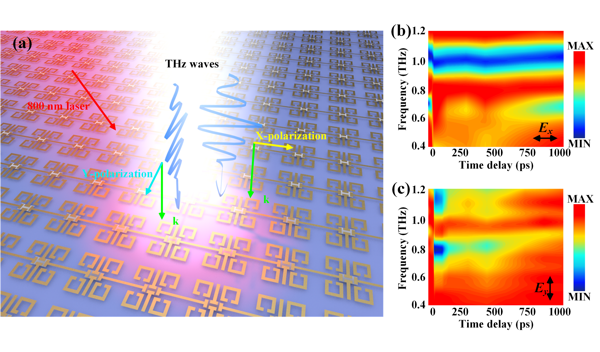Terahertz (THz) waves are electromagnetics waves with a frequency range from 0.1 THz to 10 THz. Particularly, THz waves exhibit distinguished physical properties, such as anti-interference, narrow beam and high bandwidth, granting themselves great potentials for applications in wireless high-speed communications, reliable communications, and secure communications. Furthermore, the THz spectrum band is the key to the development of 6G mobile communication networks that require the wireless data transmission speed to exceed TB per second. Fortunately, the THz spectrum band provides a higher usable bandwidth, and hence meets the ever-increasing demand for higher data transmission rate. Due to the high absorption rate of the water vapor to THz waves, the propagation of THz waves in the atmosphere attenuates drastically with the increase of distance, which is conducive to the achievement of secure communication in space.
On the other hand, the THz technology also has broad application prospects in biomedicine, environmental science, material science, public security, and national defense and military. Therefore, the research of THz components with a large modulation range and a fast operation speed is of great significance to promote the development of THz technology. At present, due to the lack of widespread practical applications in the range of THz frequency, the THz band is also called "THz gap". It is currently very difficult to obtain active and efficient active-control THz devices, which hinders the advancement and application of the THz technology.
The Electromagnetically Induced Transparency (EIT) like effect is a simulation of the EIT effect in the classical field. The EIT effect exists between the two radiation modes that interfere with each other in the atomic system. A high-Q transparent window appears in the spectral range where a strong absorption exists, showing the optical characteristics of low loss and strong dispersion. The realization of EIT-like effect in classical field can be applied to fields such as negative refractive index materials and stealth materials.
As an artificially designed metal periodic structure of sub-wavelength scale, metamaterials have abundant electromagnetic properties that natural materials do no possess, which can realize flexible control of electromagnetic waves in frequency domain that people are interested in. Using metamaterials to achieve EIT-like effect in the THz range can flexibly modulate free-space electromagnetic waves. For applications such as THz communication, security monitoring and biomedical testing, using metamaterials to achieve the integration and multi-functionalization of EIT-like effect in the THz range is of great significance and in urgent needs.
To solve the above problems, Hao Sun et al. from the National University of Defence Technology demonstrated in Chinese Optics Letters, Vol. 19, No. 1 (Hao Sun, Jie Yang, Hengzhu Liu, Dan Wu, Xin Zheng. Process-controllable modulation of plasmon-induced transparency in terahertz metamaterials [J]. Chinese Optics Letters, 2021, 19(1): 013602) that by introducing active optically controllable materials, they realized the anisotropic modulation process of the EIT-like in the THz range. This work provides a feasible solution for the development of high-performance optically controlled THz functional devices.

(a) Time-domain THz spectrum detection of the new THz modulator. (b) Color maps of anisotropic EIT-like transmittance modulation.
In this work, the authors use split-ring resonators (SRRs) and cut-wire resonators (CWRs) to form the basic unit of metamaterials. CWRs are electrically connected by silicon, whose electric conductivity can be controlled by laser pumps. Due to the directionality of the gap in SRRs, SRRs can electromagnetically couple with CWRs and realize the EIT-like effect in a pair of directions in the plane, which are perpendicular to each other. Under the excitation of laser pump with a wavelength of 800 nm, the new THz modulator achieved modulation depths of 109 % and 129 % in two directions. In addition, a group velocity delay of up to 8 ps is accompanied by the transparent window.
Due to the ultrafast excitation and relaxation characteristics of carriers in silicon, the modulating process realizes a response speed of picosecond level and a modulation period of nanosecond level. In order to improve the performance of the new THz modulation, frequency anisotropic structures and new photosensitive materials can be introduced to achieve better modulation effects and higher sensitivity. Using metamaterials combined with semiconductors to achieve anisotropic modulation of EIT-like effect has important reference for optical applications from infrared to microwave, such as multi-band sensing, ultra-wideband wireless communications, and nonlinear optics, in addition to THz communication.
Associate Professor Xin Zheng from the National Innovation Institute of Defense Technology believes that when compared to the previous modulation with single function, this work realizes the anisotropic formation process of the EIT-like for the first time, which is of great significance for the development of wireless optical communication.


